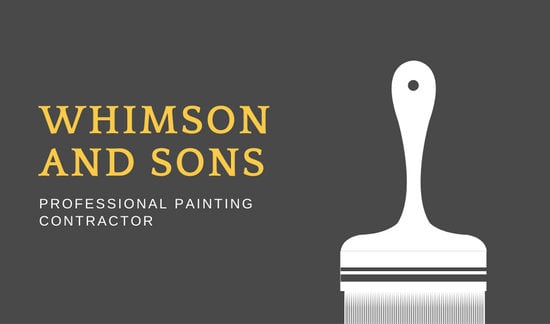Optimizing Restricted Areas: Color Techniques To Create An Impression Of Roominess
Optimizing Restricted Areas: Color Techniques To Create An Impression Of Roominess
Blog Article
Developed By-
In the realm of interior design, the art of taking full advantage of tiny areas through strategic painting methods uses a profound chance to change cramped areas right into visually large havens. The cautious option of light color combinations and smart use optical illusions can function wonders in producing the illusion of space where there appears to be none. By using Suggested Web site , one can craft a setting that resists its physical borders, inviting a sense of airiness and visibility that hides its real measurements.
Light Color Choice
Selecting light colors for your paint can dramatically boost the illusion of area within your artwork. Light colors such as soft pastels, whites, and light grays have the capacity to reflect more light, making a room feel more open and airy. These colors produce a feeling of expansiveness, making wall surfaces show up to recede and ceilings appear higher.
By utilizing light colors on both wall surfaces and ceilings, you can blur the borders of the space, offering the perception of a larger area.
Moreover, light colors have the power to bounce all-natural and synthetic light around the area, lightening up dark edges and casting less darkness. This impact not just adds to the total spacious feeling yet likewise produces a more inviting and lively environment.
When selecting professional painting companies near me , think about the touches to make certain harmony with other components in the room. By tactically integrating light shades right into your paint, you can transform a confined room right into an aesthetically larger and much more inviting setting.
Strategic Trim Painting
When intending to produce the illusion of room in your painting, calculated trim paint plays an essential role in specifying limits and improving deepness assumption. By tactically selecting the colors and finishes for trim work, you can effectively manipulate how light interacts with the room, ultimately affecting just how huge or small a room feels.
To make an area appear larger, consider repainting the trim a lighter shade than the wall surfaces. This contrast develops a feeling of deepness, making the walls decline and the area feel more large.
On the other hand, painting the trim the exact same shade as the wall surfaces can produce a smooth appearance that blurs the edges, offering the illusion of a continuous surface area and making the boundaries of the area much less defined.
In addition, using a high-gloss coating on trim can mirror more light, further improving the understanding of space. Conversely, a matte coating can absorb light, producing a cozier environment.
Thoroughly thinking about these information when painting trim can considerably influence the total feel and regarded size of a space.
Visual Fallacy Techniques
Utilizing optical illusion methods in paint can successfully change assumptions of deepness and room within a given setting. One typical technique is using gradients, where colors shift from light to dark tones. By using painting kitchen cabinets pros and cons on top of a wall and progressively dimming it in the direction of all-time low, the ceiling can appear higher, developing a sense of vertical space. On the other hand, repainting the floor a darker shade than the wall surfaces can make it feel like the area prolongs further than it actually does.
One more optical illusion strategy involves the calculated positioning of patterns. Straight stripes, for example, can aesthetically widen a slim room, while vertical red stripes can lengthen a space. Geometric patterns or murals with point of view can additionally deceive the eye into perceiving more deepness.
Additionally, incorporating reflective surface areas like mirrors or metal paints can jump light around the room, making it feel more open and large. By masterfully utilizing these visual fallacy techniques, painters can change tiny spaces right into aesthetically expansive areas.
Verdict
In conclusion, tactical painting strategies can be utilized to maximize small rooms and create the illusion of a bigger and a lot more open location.
By picking light colors for wall surfaces and ceilings, using lighter trim shades, and incorporating visual fallacy methods, perceptions of depth and size can be controlled to change a little area right into an aesthetically bigger and much more welcoming atmosphere.
